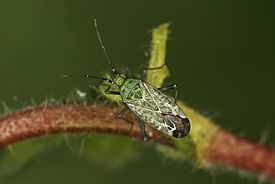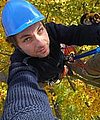30.11.2016 | News
Where humans use grasslands more intensively, not only species diversity decreases — but the landscape also becomes more monotonous. Ultimately, the same species remain everywhere. This imperils natural 'services' such as soil formation for food production or pest control. Now for the first time, 300 scientists with contribution of the Swiss Federal Institute for Forest, Snow and Landscape Research WSL have studied the consequences of land-use intensification across different species groups at the la
Normally, every meadow is different, and different species are able to find a suitable habitat somewhere. Intensified human land use leads to a smaller number of distinct plant communities on grasslands, which can therefore sustain fewer and fewer species: This is the catalyst for the increasing loss of species. According to a new study, this loss happens not only to local species but also on a much larger spatial scale and to species all along the food-chain.
For this study published in "Nature", scientists analyzed and evaluated a unique data set. For the very first time, it provided statistical evidence that intensified land use led to all grasslands becoming homogeneous and only being able to provide habitats for a few species, and this proved to be the case across regions.
The data were collected from 150 grassland areas in Germany starting from 2008. “These are probably the most comprehensive ecological field research sites in Europe,” says Wolfgang Weisser from Terrestrial Ecology Research Group at TUM, who is also one of the founders of this focus project.
4,000 species evaluated
The research areas include the UNESCO Biosphere Reserve Swabian Alb, the Hainich National Park and its surroundings, and the Biosphere Reserve Schorfheide-Chorin. All three regions differ in terms of climate, geology, and topography, but are cultivated by farmers in a manner typical for Europe. More than 4,000 species were analyzed using an innovative statistical procedure. This new method allows for nonlinear effects on the the dissimilarity of species communities between grassland areas to be tracked along a continuous land-use gradient (cutting of grass, fertilizing, and grazing).
Unique in this study was that it included data from soil organisms such as bacteria, fungi, and millipedes. “For the first time, we investigated all groups of species along the food chain on grasslands with different forms of land use in a variety of regions,” said Dr Martin M. Gossner, lead author of the study, who is now working at the Swiss Federal Research Institute WSL. The species were subdivided into twelve groups according to their position on the food chain, and whether they live above- or belowground. For example, one group of aboveground species is that of the primary producers, which mainly comprises plants. Other groups include herbivores and plant pollinators, as well as their predators.
Species loss even at moderate land use
The results showed that it did not matter whether people used grassland areas moderately or intensively, e.g. if they cut grass twice or four times a year. "According to our observations, the homogenization of species does not progress proportionally to the intensity of use. Instead, even a moderate management of grassland results in cross-regional communities being reduced to the same, less demanding all-rounders," said Gossner. "A further increase in the intensity of use simply doesn’t have a comparably large effect."
The example of the common restharrow (Ononis repens, pictured) illustrates the reason why. The plant is host for the insect Macrotylus paykulli, which feeds on its sap, or occasionally also on insects which get stuck to the glandular hairs of Ononis repens. If the common restharrow becomes increasingly rare due to the cultivation of common grass species with a high fodder value, Macrotylus paykulli no longer has a suitable habitat, and ultimately both go extinct.
This means that even a slight intensification of the use of meadows and pastures makes it impossible for many species of flora and fauna such as the common restharrow and Macrotylus paykulli to survive. In the end, only species with modest requirements regarding host plants or abiotic environmental conditions remain. This effect is called 'biotic homogenization'. "More intensive mowing is the main cause of this," said Professor Eric Allan from the Univ ersity of Bern, the senior author of the study.
"What is new here is the finding that the homogenization of species takes place across landscapes, thereby reducing the diversity of species at a regional and national level," said Gossner — "which is probably a more significant consequence of the intensification of land use than the local loss of species alone."
Extensive cultivation of grassland is essential
Hence, extensively cultivated grassland areas are essential for protecting species diversity precisely because the decline in species diversity also results in less interactions between individual species: "Interactions between plants and their consumers are increasingly weakened by more intensive agricultural usage," says Gossner — "which ultimately causes processes in the ecosystem to shift and change."
Only if as many species as possible are able to find the unique habitats they require across large areas can the so-called 'ecosystem services' be sustained. Soil formation or natural pest control are important for human well-being, too.
Source: Press release of the Technical University of Munich (TUM)
Copyright ¶
Contact ¶
Links and documents ¶
- Martin M. Gossner et al: Land-use intensification causes multitrophic homogenization of grassland communities, Nature 2016. DOI: doi:10.1038/nature20575
- Soliveres S et al: Biodiversity at multiple trophic levels is needed for ecosystem multifunctionality. Nature (2016) 536 (7617):456-459. doi:10.1038/nature19092

